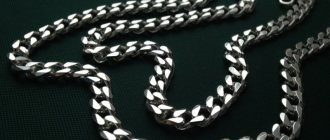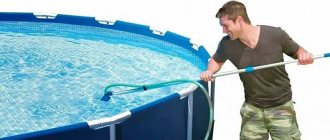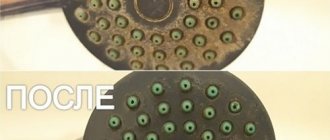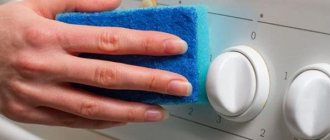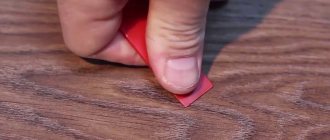Water purity is not only a global problem for our planet, but also an everyday problem that every person solves (or doesn’t solve) for himself every day. We drink water every day (in its pure form or with food).
Therefore, whether it is necessary to purify tap water is not an idle question. And although now in any hardware store you can see a huge assortment of different types of household filters from dozens of brands, which one is good is difficult to understand by appearance.
In fact, it is much easier to choose a smartphone or a car. First, both smartphones and cars have clearly measurable technical characteristics by which one model can be easily compared with another. With filters everything is more complicated - how to compare jugs? By what parameters besides volume? Secondly, the Internet is full of car reviews and selections of gadgets.
But there are practically no studies and tests that allow you to compare household types of filters or distinguish one brand from another. Either because we previously did not attach such importance to the purity of water, or for some other reason. But now, for the most part, when choosing water filters, people rely not on facts, figures and research, but on their own instinct (often deceiving), on advertising and brand promotion.
At the same time, they are often in captivity of the illusion: “Foreign means the best.” But practice, nevertheless, destroys harmonious advertising appeals and promises. Moreover, many of the advertised filters do not completely purify the water.
Purifying water by boiling
Under the influence of high temperature, water is sterilized, in which many types of dangerous bacteria, viruses and pathogens of parasitic diseases are destroyed. In addition, boiled water becomes softer, and the amount of free chlorine and elements and compounds hazardous to health is reduced.
However, a similar effect can be obtained by observing two conditions:
- Boil water for at least 15 minutes.
- The container in which water is boiled must not be covered with a lid.
Despite its simplicity and popularity,
this method has significant disadvantages:
- Fresh water contains oxygen, hydrogen sulfide, calcium, magnesium, sodium, and potassium ions. Boiling displaces oxygen from water. The ions react with each other under the influence of high temperatures, resulting in the formation of calcium salts and other elements, which are deposited in the form of scale on the walls of dishes for boiling water. As a result, we get not just “dead” water, but also harmful to health: for example, calcium salts over time can become one of the triggers for the formation of kidney stones, the development of arthrosis and arthritis.
- Boiling cannot remove salts of iron, lead, mercury and other heavy metals that are hazardous to health from water.
- Finally, chlorine and its compounds, when heated, react with organic compounds to form trihalomethanes and dioxin - carcinogenic substances that, when accumulated in the body, can lead to the development of serious diseases, including oncology.
So, why is Aquaphor more effective?
To be completely honest, the technology of most manufacturers of household water filtration systems has not progressed much over the past 30 years. Jug filters, as a rule, use the same classic sorbent: activated carbon and ion exchange resin.
Their combination is capable of removing organic matter, petroleum products, chlorine, and heavy metals. But there is a nuance. Water tends to form channels. Passing through the sorbent, it quite quickly forms “loopholes”, channels between the coal and resin granules. And it flies through such channels, practically unrefined, whistling straight into our mug.
And so Russian chemists from Aquaphor really took care of this problem - and finally solved it! They developed and patented a special fiber, Aqualen-2. Firstly, it removes heavy metal ions from water well and prevents active silver ions, which kill many (but not all) bacteria, from being washed out of the sorbent.
Secondly, and even more importantly, Aqualen-2 binds granules with coconut charcoal and ion-exchange resin into a single composite - so that the sorbent itself maintains its structure and shape. And water cannot break through channels in it. It is simply forced to be cleaned thanks to the “Aqualene coupling” of sorbent granules. Which, by the way, are 1.5-2 times smaller than those of competitors. Which is also good, because the finer and more uniform the composition of the sorbent, the higher its cleaning properties.
So that all this does not look unfounded, you can simply look at the results of a real opening of cleaning cartridges made of the same material on Habr. The insides of filters that did not perform well in the methylene blue and rust tests literally look like piles. And the Aquaphor sorbent looks like a nice Easter cake (it holds its shape), and the Aqualen-2 fibers are clearly visible in the photo.
And you can clearly see where Aquaphor retained the “blue” - at the very top of the filter (this is the top part of the filter cartridge), i.e. at the farthest approaches to cleanliness. And therefore, we can almost boldly (with a slight fear that one of the mentioned manufacturers will want to hit us on the head) declare: in experiments, filters with the letter “B” have shown their inability to turn dirty and actually toxic water into absolutely clean and harmless water.
This means that buying such a filter for your home means only one thing: before the filter, you drank chlorinated, untreated water, and with such filters you will continue to drink it. Although with a lower concentration of rubbish. Just spend money on an advertised brand.
Replaceable modules after opening
Water settling
This method of water purification involves settling tap water for 8 - 12 hours
(this is exactly the time needed for chlorine and other volatile impurities to evaporate).
To speed up the evaporation process of harmful substances, it is recommended to stir the water periodically
.
But keep in mind that settled water retains heavy metal salts that settle at the bottom, so it is not recommended to stir the water an hour to an hour and a half before the end of purification.
In order to obtain water purified from heavy metals at the outlet, it is recommended to carefully pour 2/3 of the liquid into another container: this must be done so that the sediment remains at the bottom.
General Tips
In some cases, one method is not enough ; multi-stage cleaning is necessary. This is especially true for disinfection using:
- silver,
- iodine,
- herbs
After the destruction of pathogenic microflora, the purified substance requires additional processing. It is necessary to remove microbial decay products and ions from it. It is advisable to use an activated carbon filter for this purpose.
To find a suitable water purification method, you need to know which pollutants are present in the greatest quantities.
Before you begin household post-treatment of tap or natural water, it is worth collecting information about its composition.
The ideal option is laboratory analysis or household tests. Such data will help you navigate in choosing the right water purification method.
Important! If the same container is used for cleaning and disinfection, it must be washed periodically. In the light, water “blooms”, that is, green algae appear in it, which remain on the walls of the vessel and deteriorate the quality of each subsequent portion of water.
Freezing water
Freezing is a simple and effective method that allows you not only to purify water from salts and other harmful compounds, but also to improve its quality by saturating it with oxygen.
The benefits of melt water are undeniable:
- Removing cholesterol and salts from the body.
- Strengthening the immune system and increasing the body's resistance to various diseases.
- Reducing the risk of developing allergies.
- Rejuvenation of the body.
How to get melt water? Very simple:
- Do not fill a plastic container (not a plastic bottle) or a special plastic freezer bag with water to the brim, remembering that water expands when freezing. For the same reason, you should not use glass containers, which can burst under the pressure of frozen water.
- Place a container of water in the freezer until 2/3 of it is frozen.
- Drain any water that has not frozen from the container, as it contains salts that inhibit the freezing process.
- Thaw the remaining ice - this is healthy melt water.
It is recommended to drink about 1.5 - 2 liters of melt water per day.
How to remove nitrates from water
Purifying water from nitrates is not too difficult, and the body will definitely thank the person for such help. Most often, nitrates enter the liquid along with industrial and agricultural wastewater, where this substance is added to accelerate the ripening of fruits.
It is not uncommon for nitrates to be present in well water, so it is important to always have the liquid tested to determine levels of the various elements before using it.
It is unlikely that you will be able to remove nitrates from tap water yourself at home; it is best to use one of the industrial methods:
- filters with anion exchange membranes;
- mechanisms operating on the basis of reverse osmosis.
Water purification with activated carbon
Activated carbon is a budget-friendly but effective water purification product that absorbs various harmful impurities and unpleasant odors.
By the way, household filters for water purification are equipped with carbon filters.
We suggest making such a reliable filter yourself.
For this you will need:
- Activated carbon (50 tablets).
- Gauze (or wide bandage).
- Cotton wool.
- Liter glass jar.
- One and a half liter plastic water bottle.
Let's start making a three-layer filter:
- Cut off the bottom of the plastic bottle and insert it, neck down, into the jar.
- We cut off a piece of gauze (20*20 cm) in which we wrap cotton wool - this is the first layer of the filter.
- The second layer consists of crushed activated carbon tablets, which we wrap in cotton wool.
- The third layer is identical to the first.
Our filter is ready! It is important that the filter layers fit tightly to each other, then the water will be purified not only from harmful impurities and odors, but also from mechanical particles and rust.
If you have neither the time nor the desire to make a carbon filter, we offer
a lightweight option for water purification:
- Activated carbon at the rate of 1 tablet per liter of water is placed in a gauze bag.
- The tied bag is placed in a container of water for 6 – 8 hours.
- Enjoy purified water!
Carbon filters
Advantages:
- Great for eliminating pesticides and chlorine;
- low price.
Carbon filters are one of the oldest and least expensive methods of water purification. They come in different shapes and sizes, but the principle of operation of all such filters is the same. The inside of the filter is filled with activated carbon, through which water easily seeps through, leaving behind all the unwanted impurities. Activated carbon is used in both solid block and granular forms. Water takes longer to pass through the carbon block, making this form more effective at absorbing contaminants.
Activated carbon filters are best for removing organic pollutants such as insecticides, herbicides, and polychlorinated biphenyls (PCBs). They are also capable of removing most industrial chemicals and chlorine. Activated carbon does not retain inorganic chemicals, dissolved heavy metals (such as lead) and biological contaminants. To help overcome these weaknesses, many manufacturers use activated carbon in combination with other cleaning agents such as ceramic filters and ultraviolet light. However, even with these additions, carbon filtration systems have their limitations and disadvantages.
Flaws:
- do not act against bacteria;
- short-lived.
Carbon filters can become a breeding ground for bacteria. If the water was not treated with chlorine, ozonation or any other bactericidal method before filtration with carbon, the bacteria will be trapped inside the filter. As they multiply, they will pollute the water even more. For this reason, we would not recommend using carbon filters if your water comes from a non-chlorinated well. Some manufacturers claim that the problem can be solved by saturating the carbon in the filter with silver ions. Unfortunately, this doesn't work. For the bactericidal effect, the water must remain in contact with the silver much longer than it does during its passage through the filter.
Carbon filters also lose their effectiveness over time. Once the filter reaches its maximum absorption capacity, more and more impurities will remain in the water. And since water will continue to pass through the filter easily, without testing the water quality there is no way to know if the filter is functioning properly. Therefore, it is very important to replace the filter at regular intervals or when the limit of its filtration capacity is reached, whichever comes first.
Silver water purification
This method of purifying water from microbes, viruses, bleach and other harmful substances was practiced by many generations of our ancestors.
Purifying water with silver is as easy as shelling pears – just place any silver item in a container of water for 8 – 10 hours
.
Silver not only disinfects water. This metal has a beneficial effect on the immune system, improves the condition of the skin and hair, accelerates metabolic processes, and normalizes the functioning of the gastrointestinal tract.
Important!
Do not use colloidal (or liquid) silver to purify water! It accumulates in the body, provokes poisoning and can lead to the development of a serious disease called argyrosis, which is characterized by darkening of the skin, which acquires a darkish gray tint.
Recommendations on how to filter water at home and how to purify it
The most common mistake people make is using one or another method described above without having a conclusion on the chemical composition of the drinking resource. After all, silver, herbs, activated carbon, tourmaline balls, silicon play different roles in cleaning. Some get rid of chloride compounds, others get rid of excess iron, etc. However, for ideal mineralization it is necessary to do a spectral analysis in order to know the mineral composition exactly. Otherwise, your actions will not lead to a positive result. Excessive use of folk remedies can lead to poor health. Use them as a last resort, for example, on a hike, when the source of drinking is a stream or river.
Water purification with silicon
The procedure for purifying water with silicon is simple, but at the same time effective.
To carry it out, you will need a stone weighing 5–10 g, which can be purchased at a pharmacy.
Procedure for purifying water with silicon:
- Rinse the silicon under warm running water.
- Place the stone in a glass container with cold running water (use 5 g of silicon to purify 1 liter of water).
- Cover the container with gauze folded in two layers.
- Leave the water to infuse for 3 days: it is important that direct sunlight does not fall on the container with water, but it is not recommended to infuse the liquid in a dark place.
- After three days, carefully pour the water into another container, leaving a third of the settled water at the bottom, since this sediment contains salts and heavy metal impurities.
- The stone itself must be thoroughly washed and brushed regularly after each use.
Water purified with silicon has a beneficial effect on the immune and circulatory systems, and also has a rejuvenating effect.
To purify water, it is recommended to use light-colored silicon.
Total: what do we have in the bottom line?
So, any adequate person understands that in the current municipal conditions it is necessary to purify or additionally purify water. After studying the issue, it became quite obvious that advertising of filters does not in any way affect their real ability to purify water. And you can buy an expensive filter from a famous brand, which will actually poison you because it will not completely protect you from rust and toxins.
Or you can choose a Russian filter, which is guaranteed to turn dirty water into clean water. And in the case of the coolest reverse osmosis system "Aquaphor", in addition to top-quality water purification, it will be compact, economical and productive. And most importantly: there is no secret, and the water does not need to be “charged with Chumak from the TV.”
Enough pure science from Aquaphor.
#advertising
(
5 votes, overall rating: 4.00 out of 5)


